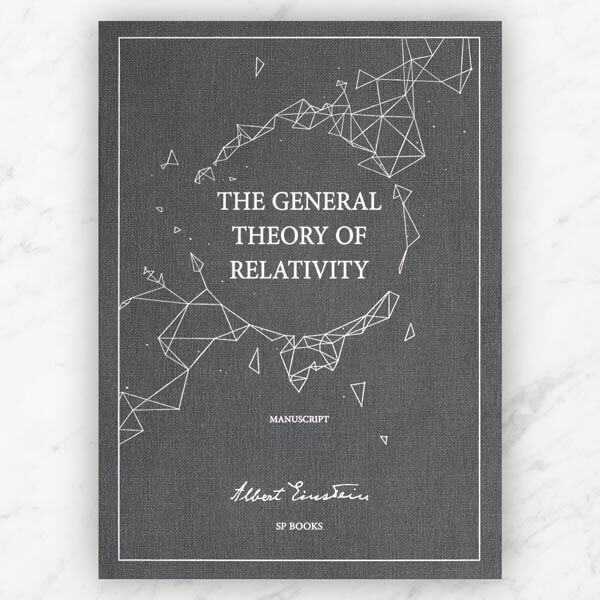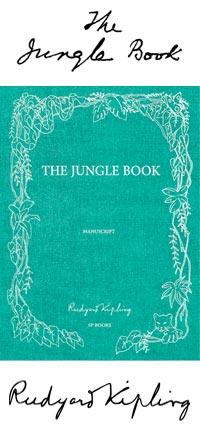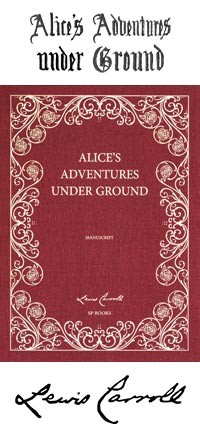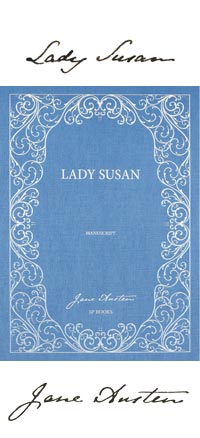The General Theory
of Relativity by Albert Einstein
The manuscript is in German
The foreword is in English
The General Theory of Relativity, the manuscript
This hard-bound, slip-cased volume is the first-ever reproduction in manuscript form of Albert Einstein’s ‘Die Grundlage der Allgemeinen Relativitätstheorie’ (‘The basis of the general theory of relativity’). It has been digitally enhanced and restored and is introduced with an essay by Professor Hanoch Gutfreund, the director of the Albert Einstein Archives at the Hebrew University of Jerusalem. The essay is printed in three languages: English, French and German.
The manuscript which would overturn the understanding of modern physics
On 25 November 1915, Albert Einstein presented a paper entitled ‘Die Grundlage der Allgemeinen Relativitätstheorie’ to the Royal Prussian Academy of Sciences. Published in the prestigious journal Annalen der Physik on 11 May 1916, this 46-page document was the culmination of ten years of intensive research by Einstein to generalize his Special Theory of Relativity which he had formulated in 1905. The result was the General Theory which altered our whole understanding of modern physics.

In his 1916 article Einstein introduced for the first time the idea of a gravitational field equation which was to become the keystone of his Theory and made three major predictions: the bending of light rays when influenced by the gravitational field of a massive body; gravitational redshift; and an explanation for the perihelion advance of the planet Mercury. In 1919, just three years after the publication of his General Theory, observations taken during a total eclipse of the sun confirmed his prediction about the effect of gravitation on light rays making Einstein an international scientific celebrity overnight.
In 2016 scientists world-wide confirmed for the first time the existence of gravitational waves resulting from the collision of two black holes. This observation, made much earlier than physicists had hoped, validated yet again Einstein’s equations of 1916.

‘The Magna Carta of Modern Physics’: Professor Hanoch Gutfreund’s preface
In his preface to this volume [click here] Professor Hanoch Gutfreund, the director of the Albert Einstein Archives at the Hebrew University of Jerusalem, tells the extraordinary story behind Einstein’s convoluted intellectual odyssey toward the General Theory of Relativity. The outcome of it was to be this manuscript which would radically change our view of the universe and help pave the way to modern technology.

The charmed life of a manuscript
It is a near-miracle that this document should have survived at all as Einstein was in the habit of destroying his working papers once they had appeared in book or manuscript form. For just this reason none of his manuscripts has survived from his annus mirabilis 1905 when he published his groundbreaking work on the Special Theory of Relativity. A manuscript version of his article ‘On the electrodynamics of moving bodies’ (1905) does indeed exist and is preserved in the Library of Congress, but it is a fair copy written out by Einstein in 1944 and sold at auction as his contribution to the American war effort.
The original manuscript from 1916 did survive, however, which makes it all the more exceptional. Einstein first offered it to a friend and colleague, Erwin Finlay-Freundlich, but later asked for its return when relations between the two men deteriorated in 1921. He then asked the industrialist and philosopher of science, Paul Oppenheim to sell it for the benefit of the newly founded Hebrew University in Jerusalem but Oppenheim, as a friend of both Freundlich and Einstein, turned down the commission. It was thanks to Elsa, Einstein’s wife, that the manuscript was eventually offered to the Hebrew University with 2000 Marks to be paid to support the research work of Prof. Freundlich and 400 marks to Mrs Einstein’s charities.

The first complete facsimile of the restored manuscript
Einstein’s manuscript has been preserved in the archives of the Hebrew University since its inauguration on 1 April 1925. It is regarded as one of the jewels of the collection and has only once been on public exhibition in 2011 when it attracted crowds of fascinated visitors. It is the first time that this document of supreme scientific importance has been reproduced in printed form and with the manuscript pages enhanced by our team of specialised graphic artists. The effect has been to restore its pages as near as possible to their original state, as if the ink were barely dry on the paper. There are some interesting variations from the article in Annalen der Physik and it reveals clearly all the last minute corrections made by one of the greatest scientists of the 20th century as he perfected his General Theory of Relativity.

Deluxe edition
This Steel grey edition is presented in a large format handmade slipcase.
Printed with vegetal ink on eco-friendly paper, each book is bound and sewn using only the finest materials.
Mrs Dalloway: Thanks to a new reproduction of the only full draft of Mrs. Dalloway, handwritten in three notebooks and initially titled “The Hours,” we now know that the story she completed — about a day in the life of a London housewife planning a dinner party — was a far cry from the one she’d set out to write (...)
The Grapes of Wrath: The handwritten manuscript of John Steinbeck’s masterpiece The Grapes of Wrath, complete with the swearwords excised from the published novel and revealing the urgency with which the author wrote, is to be published for the first time. There are scarcely any crossings-out or rewrites in the manuscript, although the original shows how publisher Viking Press edited out Steinbeck’s dozen uses of the word “fuck”, in an attempt to make the novel less controversial. (...)
Jane Eyre: This is a book for passionate people who are willing to discover Jane Eyre and Charlotte Brontë's work in a new way. Brontë's prose is clear, with only occasional modifications. She sometimes strikes out words, proposes others, circles a sentence she doesn't like and replaces it with another carefully crafted option. (...)
The Jungle Book: Some 173 sheets bearing Kipling’s elegant handwriting, and about a dozen drawings in black ink, offer insights into his creative process. The drawings were not published because they are unfinished, essentially works in progress. (...)
The Lost World: SP Books has published a new edition of The Lost World, Conan Doyle’s 1912 landmark adventure story. It reproduces Conan Doyle’s original manuscript for the first time, and includes a foreword by Jon Lellenberg: "It was very exciting to see, page by page, the creation of Conan Doyle’s story. To see the mind of the man as he wrote it". Among Conan Doyle’s archive, Lellenberg made an extraordinary discovery – a stash of photographs of the writer and his friends dressed as characters from the novel, with Conan Doyle taking the part of its combustible hero, Professor Challenger. (...)
Frankenstein: There is understandably a burst of activity surrounding the book’s 200th anniversary. The original, 1818 edition has been reissued, as paperback by Penguin Classics. There’s a beautifully illustrated hardcover, “The New Annotated Frankenstein” (Liveright) and a spectacular limited edition luxury facsimile by SP Books of the original manuscript in Shelley's own handwriting based on her notebooks. (...)
The Great Gatsby: But what if you require a big sumptuous volume to place under the tree? You won’t find anything more breathtaking than SP Books ’s facsimile of F. Scott Fitzgerald’s handwritten manuscript of The Great Gatsby, showing the deletions, emendations and reworked passages that eventually produced an American masterpiece (...)
Oliver Twist: In the first ever facsimile edition of the manuscript SP Books celebrates this iconic tale, revealing largely unseen edits that shed new light on the narrative of the story and on Dickens’s personality. Heavy lines blocking out text are intermixed with painterly arabesque annotations, while some characters' names are changed, including Oliver’s aunt Rose who was originally called Emily. The manuscript also provides insight into how Dickens censored his text, evident in the repeated attempts to curb his tendency towards over-emphasis and the use of violent language, particularly in moderating Bill Sikes’s brutality to Nancy. (...)
Peter Pan: It is the manuscript of the latter, one of the jewels of the Berg Collection in the New York Public Library, which is reproduced here for the first time. Peter’s adventures in Neverland, described in Barrie’s small neat handwriting, are brought to life by the evocative color plates with which the artist Gwynedd Hudson decorated one of the last editions to be published in Barrie’s lifetime. (...)






















Customer reviews
I am thrilled to have the copy #571 of the magna carta of modern phisics. Delivery is on range estimated time. Well packed. The book is beautiful.
Magnifique ouvrage qui a ravi celui à qui je l'ai offert. Une traduction française en fin d'ouvrage ne serait pas inutile. Bravo pour votre travail.
I am the happy owner of the number 243 of this wonderful reproduction of Einstein's text. It was my Christmas' gift made by my son. I must say that it is a PERFECT, aesthetic and very well done work. It's simply a masterpiece, a treasure of the world of edition…